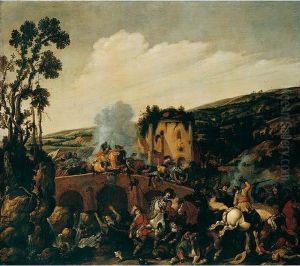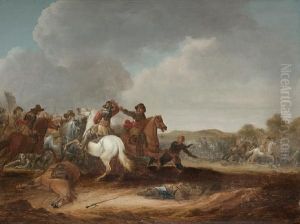Nicolaes Quade I De Van Ravesteyn Paintings
Nicolaes Quade van Ravesteyn, born in 1565 and died in 1629, was a notable Dutch painter from the late Renaissance period, primarily recognized for his detailed and expressive portraits. His work is often associated with the city of The Hague, where he spent a significant portion of his career and where he significantly contributed to the development of Dutch portrait painting. Despite the common confusion with Jan Anthonisz van Ravesteyn, a contemporary and possibly related artist, Nicolaes established his own unique style and clientele.
Nicolaes Quade van Ravesteyn's early life and training remain somewhat obscure, a common issue for many artists of his time. However, it is believed that he was part of the vibrant artistic scene in the Netherlands that was influenced by the Italian Renaissance, integrating those influences into the Northern European painting tradition. His portraits are characterized by meticulous attention to detail, particularly in the depiction of fabrics and jewelry, which reflects the wealth and status of his subjects. These portraits not only serve as a testament to his technical skill but also provide a window into the societal norms and fashions of the Dutch Golden Age.
Throughout his career, van Ravesteyn enjoyed the patronage of the Dutch elite, including stints working for the House of Orange. His portraits were highly sought after for their elegance and realism, capturing the individual character of his sitters while also adhering to the conventions of status and propriety of the time. His works are distinguished by their sophisticated use of light and shadow, which adds a three-dimensional quality to the figures, a technique that would influence the subsequent generations of Dutch portrait painters.
Despite his contributions to Dutch art, Nicolaes Quade van Ravesteyn's legacy is somewhat overshadowed by other contemporaries such as Rembrandt and Vermeer, whose works have become synonymous with the period. Nevertheless, his paintings are preserved in several important collections, including museums in the Netherlands and around the world, where they continue to be studied and admired for their craftsmanship and historical value. Van Ravesteyn's work remains an important part of the narrative of Dutch painting, offering insight into the cultural and social dynamics of his time.

